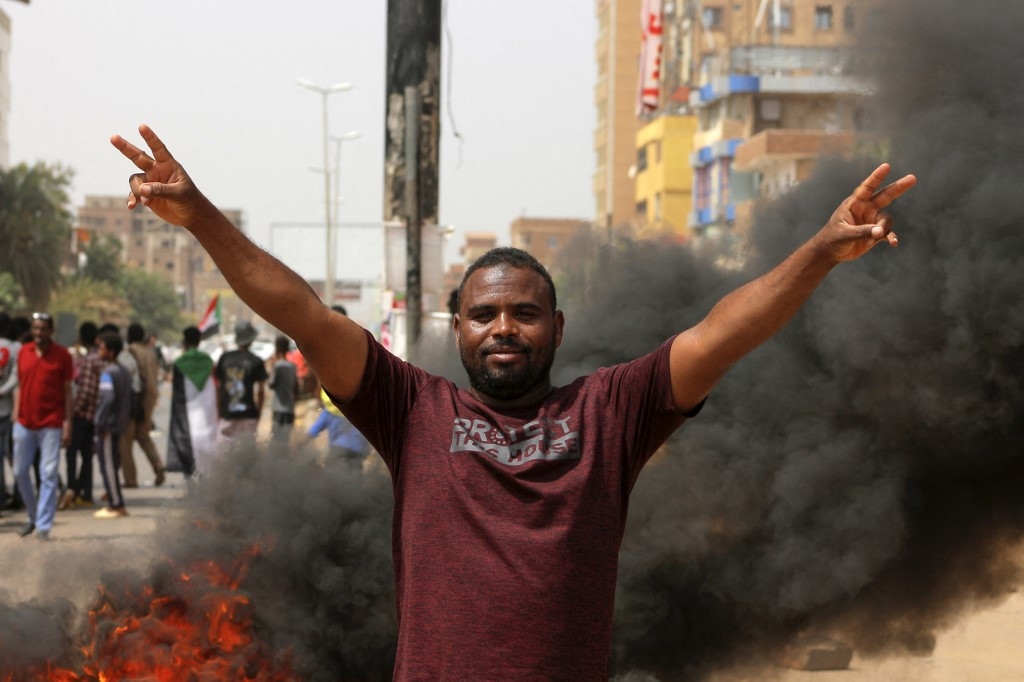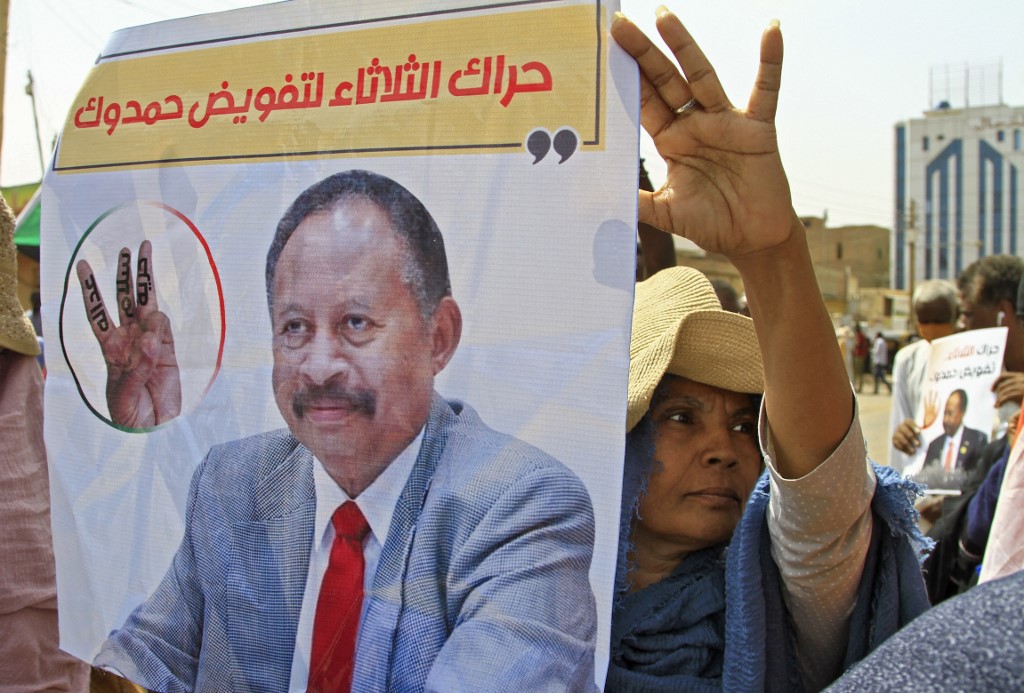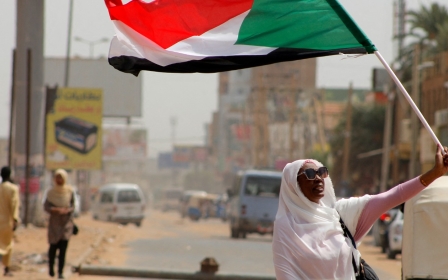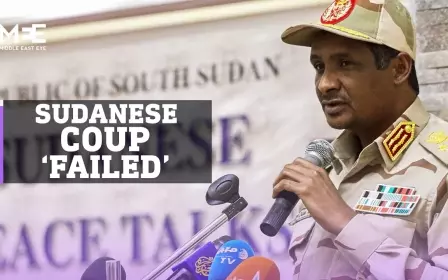Sudan’s Unfinished Democracy: A new history of the 2019 revolution

There is a longstanding joke about Sudanese politics: that it changes every week but if you come back after ten years it is exactly the same.
It is a year since the October coup by army chief Abdel Fattah al-Burhan against the civilian transitional government, and more than three years since the former dictator Omar al-Bashir was overthrown by the same army in the face of mass protests.
Sudan’s civic revolutionaries have a long and proud history of resistance, dating back to uprisings in 1964 and 1985. However, when the movement against the dictatorship of Bashir, which began in late 2018, achieved its immediate goals in April 2019 and he fell after 30 years in power, it was ill-prepared for the state power that suddenly fell within its grasp.
Sudan’s Unfinished Democracy is an authoritative, elegantly written, and insightful analysis of the recent period of protest and change that, like previous such episodes, has seen a standoff between the military and the grassroots opposition.
Oil and gold
As the authors explain, Sudan’s economic model went from colonial capitalist, to a developmental state run by technocrats in the 60s, to socialist central planning in the 70s, to an Islamist model in the late 80s, then back to unbridled capitalism in the 2000s.
Sudan’s oil boom from 1999 to 2012 enriched a few and fuelled an elite dream of Sudan becoming a petrostate, but this model was cut short by the vote of South Sudan for independence in 2011. The western edge of Khartoum, under the Al-Mogran Development Project, transformed into a mini Dubai with glittering skyscrapers for banks and oil companies.
Then Sudan struck gold, drawing hundreds of thousands of artisanal miners from rural areas, frequently young men who abandoned farming for the chance of riches.
Women’s major presence in the street during the protests gave prominence to their voices and testimonies, yet this failed to translate into political influence
The book addresses the complexities of a state that contained within it both a metropolitan centre and marginalised and exploited peripheries inherited from the colonial era. Both elite alliances under Bashir, and the revolutionary forces that replaced him, contained this tension and division within them.
Many of the class, race and gender divisions in Sudan were subtly replicated in the opposition camp and the mass sit-ins of 2019, which brought together many exiled activists from the diaspora using their networks and skills to aid the civic resistance.
Women’s major presence in the street during the protests gave prominence to their voices and testimonies, yet this failed to translate into political influence during the negotiations that gave birth to the transitional authority. Despite women making up to 60 percent of protestors, there were almost none in the leadership of the opposition Sudan Professional Association (SPA) and Freedom Forces Coalition, the authors point out.
In the recent uprising and counter-revolution, the forces of the periphery, including the armed rebel groups such as the Justice and Equality Movement and Sudan Revolutionary Front, and the pro-government militia, the RSF, played critical roles in the political drama.
Hamdok's curse
In a post-communist era, it is notable that the technocratic prime minister, Abdalla Hamdock, was himself until recently a communist, as were many of his advisors. But they were primarily pragmatists with a technocratic outlook rather than Marxist revolutionaries.
As a former UN economist, Hamdok’s 18 months in office saw him outmaneuvered by the ruthless transactional actors in the military and the old parties, who had the cash, the power, and the guns.
Hamdok hoped that the mass civic movement would prevent Sudan from reverting to dictatorship, as happened in Egypt after its 2011 uprising: “We have well entrenched resilient political parties that make it different from the other [Arab Spring] nations. And I think more than that we have this public opinion, public movement which are there to guard it. This will help us keep the flame.”
He said this in June 2020 - a year later things looked very different. His removal of subsidies on fuel and food in December 2019 in order to balance the books and satisfy international funders sparked opposition from communists and Baathists.
Hamdok was hoping for quick aid from the US and financial institutions to pay for his plan, but the US wanted to see results before it put its money in.
Sudan also had to pay out $335m for victims of terror attacks that Sudan was held responsible for in the Bashir era. Grudgingly, Hamdok agreed to pay in order to remove Sudan from the US terror list.
President Trump wanted Sudan to recognise Israel. His Secretary of State Mike Pompeo briefly visited Khartoum in a disastrous visit that saw his security detail manhandle senior officials in the civilian cabinet, which left them fuming. The normalisation deal was agreed upon with military chief Abdel Fattah al-Burhan, but the civilian forces voiced opposition.
Flame of the revolution
After an assassination attempt against him, Hamdok said: "This is a revolution, we lost some of the most talented young people during the uprising and I cannot say that I am any more valuable than those people."
But the civilian resistance was growing restless. Communists and other leftists took over the SPA after the signing of the constitutional declaration, opposing the “opportunist” and “pragmatic” faction that made deals with the military.
Neighbourhood committees - an estimated 700 local committees in Khartoum, and 3,000 across the country - were the torch carriers of the revolutionary spirit. This new “anti-structure” was not formalised, but was a fleeting vision of a new social contract where different classes and national groups were able to unite.
Meanwhile, the National Umma Party followed a tradition it had adopted in 1964 and 1985 of seeking to prevent further popular mobilisation by striking a deal with the military.
Hemeti, Yemen, and the Saudis
A key figure in the post-Bashir military leadership was Hemeti, Burhan’s deputy and rival, a former RSF militia leader from Darfur, who had grown rich off the back of the gold boom and the Yemen war.
The militia-based counter-insurgency in Darfur under Bashir had created a “monstrous instrument that grew to control its creator. Ultimately Hemeti was Brutus to al-Bashir’s Caesar.”
The RSF played an important role in the Yemen conflict, which was highly lucrative for militia commanders - Hemeti received the fighters’ salaries in hard currency and paid soldiers in Sudanese pounds, providing him and other militia leaders with personal profits.
Saudi and Emirates recruiters cooperated with RSF commanders to hire individual militiamen from Darfur who would together become the largest force of troops serving in the Saudi-led coalition.
Sudan also kept ties with Turkey and Qatar. Both countries provided direct investment, such as the Turkish rehabilitation of Suakin port. However, Hemeti made the bet that the anti-Islamist powers in the region, led by the UAE and Saudi Arabia, were going to be the winners, and so he broke with Bashir’s balancing act between the two camps.
When Hemeti signed the constitutional declaration with civilian leaders in August 2019, he waved it over his head upside down. It was a bad omen of things to come.
The army and RSF were busy taking over the semi-secret mechanisms of control inherited from Sudan’s intelligence agency, the NISS, including the agency’s shadowy business empire.
Hemeti handed over his gold mines to the government and relinquished influence at the central bank. But the transition government’s anti-corruption agenda - targeting parallel military and militia budgets - became a vexed issue that ultimately brought down the civilian government in late 2021.
Reasons for hope
After the October 2021 coup led by army chief Burhan, is there any hope?
One factor that makes a conservative takeover in Sudan unlikely is that 60 percent of the Sudanese population is below the age of 24 and the median age is just 20. The majority of them are not wedded to the pragmatism of the old political parties and have built their own organisations, like Shabab al-Thawra (Revolutionary Youth), formed at the sit-in at the military headquarters.
Even the National Ummah party youth wing opposed the party leadership’s conciliation with the military.
“The dominant factor unifying the civilian leadership of the popular uprisings from 1964 to 2019 has been a shared commitment to a civic ideal and rejection of authoritarianism. Sudan’s revolutionaries were united enough to defeat the military but broke up over their different visions of Sudanese society,” say the authors.
For his coup, Burhan needed foreign support and he got it from Egypt’s Abdel Fattah al-Sisi and Israel, but the US Biden administration warned him that he would lose US aid if he did not return to a civilian transition. His position is still tenuous.
For the resistance committees, there is no turning back to 2019; any idea of reaching a deal with the military, following its massacres and betrayals, is a non-starter. The civilians on the streets have made their demand clear: “A fully civilian government to be set up immediately to take the country out of the crisis.”
Time will tell if Sudan can break with the cycles of the past, and forge a new era.
Sudan's Unfinished Democracy: The Promise and Betrayal of a People's Revolution
By Willow Berridge, Justin Lynch, Raga Makawi, Alex de Waal (Hurst/International African Institute)
The views expressed in this article belong to the author and do not necessarily reflect the editorial policy of Middle East Eye.
This article is available in French on Middle East Eye French edition.
Middle East Eye propose une couverture et une analyse indépendantes et incomparables du Moyen-Orient, de l’Afrique du Nord et d’autres régions du monde. Pour en savoir plus sur la reprise de ce contenu et les frais qui s’appliquent, veuillez remplir ce formulaire [en anglais]. Pour en savoir plus sur MEE, cliquez ici [en anglais].








